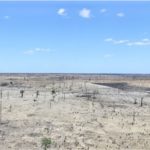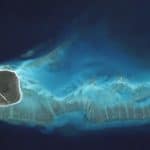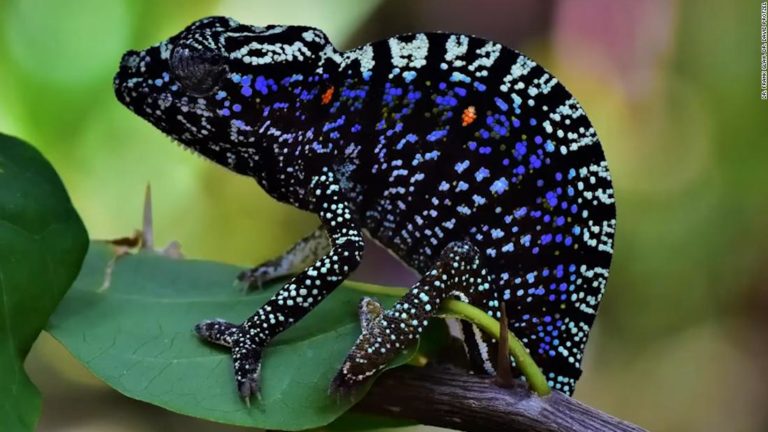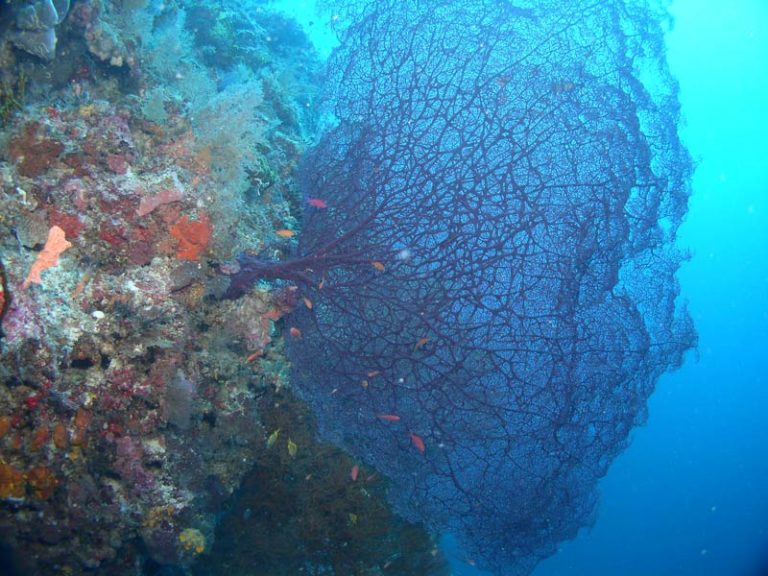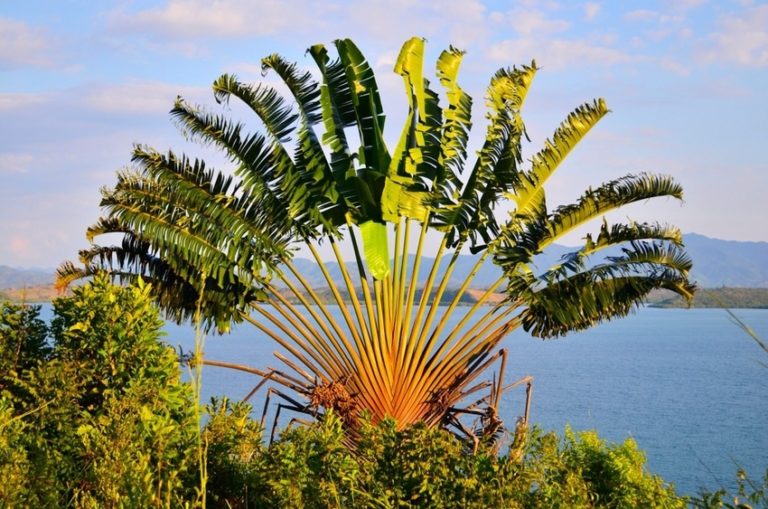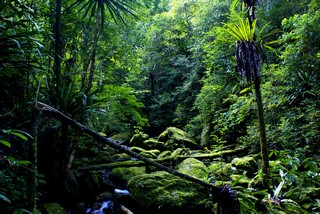Snake species from Madagascar
Unlike other animals, there is very little information about snakes in Madagascar.
Currently there are 95 snake species in Madagascar, of which about ten, very few are described. Note also that the rate of endemicity of snakes in Madagascar is very high.
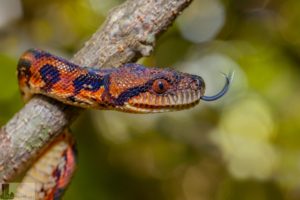 Only three species from the list below are not endemic.
Only three species from the list below are not endemic.
These snakes are not too aggressive, as in some countries, with a few exceptions.
Very few are poisonous, none of them are really known to be dangerous to humans.
The most famous of the madagascar snakes is probably the Boa Manditra.
Hydrophis platurus
Otherwise, another snake species not included in the list below sometimes roams Malagasy lands, a poisonous sea snake, the Hydrophis platurus, especially on the northern coasts.
This Sea snake is up to 1 m long, it is a venomous and pelagic marine snake.
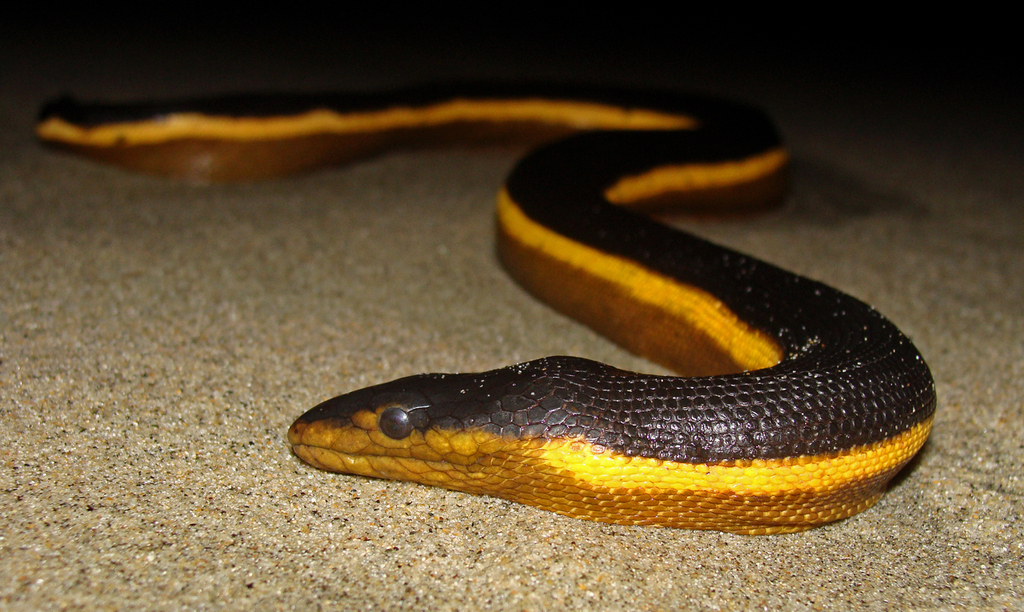 The body is very flattened on the sides (like some fish), with a black back and a bright yellow belly.
The body is very flattened on the sides (like some fish), with a black back and a bright yellow belly.
The tail is usually lighter in color, with large black spots. It is viviparous.
Lifestyle habits
This snake feeds mainly on small fish and larvae, which it hunts while lurking under floating objects.
The black and yellow snake is not aggressive towards humans and has no reason to attack: in case of an encounter, it will always prefer to flee rather than fight.
On the other hand, it will be able to defend itself if caught and threatened by attempting a defensive bite that contains a greater or lesser dose of venom depending on the magnitude of the threat.
In large quantities, this toxin can be dangerous to humans and in some cases even fatal.
However, accidents are still extremely rare: Apart from the low frequency of encounters and the fact that the bites are almost never undeserved, the mouths of these snakes are very small (suitable for eating small fish), and the opening width is often not enough to make a bite.

This snake, which is very well adapted to swimming, is particularly slow and clumsy on land, where it is almost never found, as its entire life and reproductive cycle takes place in the open sea.
Habitat and distribution
This snake is pelagic: it lives mainly in the open sea, very far offshore and rarely approaches the coast (especially when it is sick, especially after storms).
Encounters are therefore extremely rare. It appreciates floating objects and other natural rafts (or floating debris) in which it hides to observe its prey.
This marine species is widely distributed in the Indian and Pacific Oceans.
It is a species that can be recognized by its color mixture of black and yellow.
The different species of snakes in Madagascar
The genus Xenotyphlops
The genus Xenotyphlops is the only representative of the Family Xenotyphlopidae, they are endemic to Madagascar.
They are small snakes of about 25 cm and a diameter of 3.5 mm. Xenotyphlops live in the north of Madagascar, in the region of Diana.
The genus Xenotyphlops consists of two species:
Xenotyphlops grandidieri
The Xenotyphlops grandidieri, uniformly grayish colored snake that lives north of the City Diego Suarez is found.
Xenotyphlops mocquardi
The pink Xenotyphlops mocquardi occurs east of Diego Suarez.
The endangered Madagascar blind snake is a tiny, worm-like snake like no other.
The blind snake from Madagascar has lost the use of her eyes and digs through sandy soil with her bulldozer-like head.
This bizarre snake is no bigger than an earthworm, and with its translucent pink skin, it looks like one too! However, blind snakes are actually highly specialized predators that hunt ants and termites underground and quickly consume them using a unique feeding mechanism.
This unique blind snake is the only species in its genus and even in its family, Xenotyphlopidae.
The Madagascar blind snake differed from all other living creatures almost 65 million years ago - around the time of the extinction of the dinosaurs!

Unfortunately, further research throughout the region has revealed that the species' habitat is significantly threatened.
Coastal forests are threatened by logging, charcoal production, and livestock grazing.
Because the snake can occur in an area as small as 10 km2, it has been excluded from the IUCN Red List classified as threatened with extinction.
There are currently no conservation measures for this snake and it does not occur in any protected area.
The two known species of Xenotyphlops are classified as endangered.
Genus: Madatyphlops
The Family Typhlopidae includes several species that are widespread throughout the form, but only the Subfamily Madatyphlopinae exists in Madagascar and is also endemic.
The Genus Madatyphlops is the only representative of this subfamily.
The genus Madatyphlops includes 11 species, all endemic to Madagascar:
Madatyphlops andasibensis
The Madatyphlops andasibensis, which, as its name suggests, lives around Andasibe and the nature reserves there.
Madatyphlops arenarius
The Madatyphlops arenarius, which is found almost everywhere in the western part of Madagascar, including around the city of Mahajanga, Toliara, or Fort-Dauphin..
Madatyphlops boettgeri
The Madatyphlops boettgeri, which lives on a large territory in southwestern Madagascar, visible among others within the Tsimanampetsotsa National Park.
Madatyphlops decorsei
The Madatyphlops decorsei, which lives on a coastal strip in western Madagascar that extends to Ankarafantsika in the north and to Tsimanampetsotsa in the south.
Madatyphlops domerguei
The Madatyphlops domerguei, found only near two towns in the southern highlands of Madagascar, Ifanadiana and Fianarantsoa.
 Madatyphlops madagascariensis
Madatyphlops madagascariensis
Madatyphlops madagascariensis, endemic to Nosy-be Island, is especially abundant in the Lokobe Integral Nature Reserve.
Madatyphlops microcephalus
The Madatyphlops microcephalus, is a snake from northern Madagascar, endemic to the Diana region.
Madatyphlops mucronatus
The Madatyphlops mucronatus, occurs in several areas of the island, such as in the north, in the region of Diana, but also on the plateaus around the capital.
Madatyphlops ocularis
Madatyphlops ocularis is a snake found in three locations, near Maroantsetra, around Fort-Dauphin, and within Marojejy National Park.
Madatyphlops rajeryi
The Madatyphlops rajeryi, lives only in and around Ranomafana National Park.
Madatyphlops reuteri
The Madatyphlops reuteri, is found on Nosy-be Island and Ampasindava Peninsula.
Genus: Acrantophis
Family: Boidae - Subfamily: Boinae
Acrantophis madagascariensis
The genus Acrantophis or the Terrestrial Boa of Madagascar, or called "Dou" in Madagascar, belong to the family Boidae, known mainly by the name Boa.
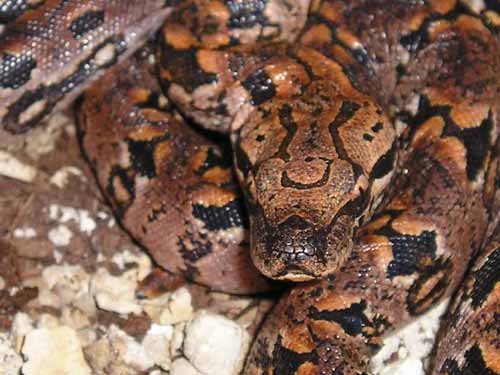
Acrantophis are not poisonous. In fact they are Strangler snakes, which means that they kill their prey by enclosing them in their rings.
Acrantophis dumerili
The Acrantophis dumerili, which is about two meters long and lives in the southern part of Madagascar.
Acrantophis madagascariensis
Acrantophis madagascariensis, which can measure up to more than 2.5 m, lives at low altitudes in northern Madagascar.
Genus: Sanzinia
Sanzinia madagascariensis
The type Sanzinia madagascariensis is the only representative of the genus Sanzinia.
In Madagascar it is also called manditra, a non-poisonous species, but feared by humans, especially for animals.

The Sanzinia madagascariensis is a snake that can grow up to 2.5 m long.
In the east they live in tropical forests and are generally green in color, and in the west they live in dry forests and are generally orange in color.
The Species Sanzinia madagascariensis has two subspecies: Sanzinia madagascariensis madagascariensis and Sanzinia madagascariensis volontany.
Genus: Alluaudina
Family: Lamprophiidae - Subfamily: Pseudoxyrhophiinae
The genus Alluaudina is endemic to Madagascar.
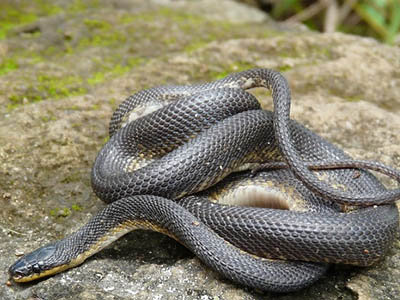
Snakes of the genus Alluaudi are mainly found in the north.
The genus has two species:
Alluaudina bellyi
Alluaudina bellyi, found mainly in the western part of Antsiranana province, in northern Madagascar, but also in some places such as the Tsingy of Bemaraha or Ankarafantsika.
Alluaudina mocquardi
Alluaudina mocquardi, which occurs only in the reserve of Ankarana.
Genus: Brygophis
Brygophis coulangesi
The genus Brygophis has only one species, Brygophis coulangesi. It is endemic to Madagascar.
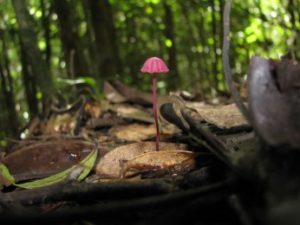
They are located mainly in the Special Reserve Anjanaharibe-Sud and in a small area near Fierenana, further south in the Mantadia Andasibe National Park.
However, it is estimated that it is quite possible that some specimens of Brygophis coulangesi inhabit the entire forest corridor in eastern Madagascar.
Genus: Compothis
The genus Composthis is endemic to Madagascar. They are animals that can reach more than 6 m in some species. The genus Compothis includes 7 species:
Compsophis laphystius
The Compsophis laphystius from the Marojejy National Park.
 Compsophis albiventris
Compsophis albiventris
Compsophis albiventris is found in two very remote locations, in the Amber Mountains and in Bemaraha.
Compsophis boulengeri
The Compsophis boulengeri is one of the most numerous of its species. It is found in the east of Madagascar, in a large area covered by the Marojejy National Park in the north until Ranomafana in the south, but also in the Amber Mountains.
Compsophis fatsibe
The Compsophis fatsibe occupies a large territory, which is covered by the integral Tsaratanàna Nature Reserve until the Special reserve of Anjanaharibe-Sud is enough.
Compsophis infralineatus

Compsophis laphystius
The Compsophis laphystius, is also a very widespread species. It is found in a very large area in eastern Madagascar, reaching Marojejy in the north and South Midongy National Park in the south.
Compsophis vinckei
The Compsophis vinckei, the only one of the genus classified as "critically endangered", is located within the Andasibe Mantadia National Park.
Zeny Compsophis
The Zeny Compsophis, is classified as "endangered". It lives in the southeast of Madagascar, on an area from Ranomafana to Andohahela.
Genus: Dromicodryas
The genus Dromicodryas is endemic to Madagascar. Snakes of this genus are among the most widespread in Madagascar.
The genus Dromicodryas has two species:
Dromicodryas bernieri
Dromicodryas bernieri, a widespread species, which is completely Western and Central Madagascar inhabited. Exceptionally, however, it is also found in the eastern part of the island near Fenerive Est.
 Dromicodryas quadrilineatus
Dromicodryas quadrilineatus
Dromicodryas quadrilineatus is also a very common species.
It is found in the northern part of Madagascar.
In the center remains only the Alaotra region spared. In the west, its range extends to Isalo and in the east to Fort-Dauphin.
Genus: Elapotinus
The genus Elapotinus has only one species: Elapotinus picteti, sometimes also under another name 
It is a species that occupies a large territory in the northeast of Madagascar, from Amber Mountain in the north to Andasibe Mantadia.
Elapotinus picteti
It inhabits the humid forests of this region of the island, which are therefore far from the coastal areas.
Upper jaw very short, with five teeth gradually increasing in size, followed after a space by a large, grooved fang located below the eye.
Lower teeth decrease in size from behind. Head small, indistinguishable from neck.
Eyes with round pupil. Nostril between two nostrils. No loreal. Body cylindrical; tail short. Dorsal scales smooth, without dimples, in 17 rows. Ventricles rounded; subcaudals in two rows.
Genus: Heteroliodon
The genus Heteroliodon is also endemic to Madagascar. Heteroliodon occipitalis was the only species of the genus for more than a century.
The other two species have only been described since 2005.
The genus Heteroliodon thus comprises a total of three species:
Heteroliodon occipitalis
Heteroliodon occipitalis, a species living in eastern Madagascar.

This species has a light brown dorsal surface with light edged scales and with two dark longitudinal lines.
The top and sides of the head and neck are yellowish-white. The ventral side is uniformly white.
Their range includes a coastal area from the Tsingy de Namoroka to Andohahela in the southeast.
Heteroliodon fohy
The Heteroliodon fohy, according to its name "fohy" is shorter than the other species of the genus.
It is a species classified as "in danger", found in northern Madagascar, near the City Diego Suarez, lives.
Heteroliodon Lava
The Heteroliodon lava, is the longest, unlike the "fohy" species.
This is in fact the meaning of the word "lava" in Madagascar.
You can find them only in two places on the island: in the Tsingy from Bemaraha and in the Tsingy from Ankarana.
Genus: Ithycyphus
The genus Ithycyphus, is endemic to Madagascar. Snakes of the genus Ithycyphus are arboreal and can grow up to 1.5 m long as adults.
The genus Ithycyphus includes 5 species:
Ithycyphus goudoti
The Ithycyphus goudoti, which is found at very low altitude on a coastal strip that separates eastern Madagascar from Maroantsetra in the north until Fort-Dauphin covered in the south.
Ithycyphus miniatus
The Ithycyphus miniatus which is found almost everywhere in the northwestern part of the island, then on the northeast coast.
Ithycyphus oursi
The Ithycyphus oursi, which occurs throughout the southwestern part of Madagascar, but also throughout the south to Fort-Dauphin.
Ithycyphus perineti
Ithycyphus perineti, which is found throughout the forest corridor in the east of the island.
Its range is defined by the Marojejy National Park in the north and Andringitra bounded on the south.
It is also found in the northern part of the island, along the west coast of Ambanja to Diego Suarez.
Genus: Langaha
The genus Langaha, is endemic to Madagascar , I have already seen it in a other article described in detail.
Snakes of the genus Langaha are easily recognized because their head is wider than their body and ends in a pointed nose. It is an arboreal species.
The genus Langaha includes 3 species:
Langaha alluaudi
The Langaha alluaudi occupies a broad coastal strip in southwestern Madagascar, bounded on the north by the city of Belo-sur-Tsiribihina and on the south by the city of Fort-Dauphin.
 Langaha madagascariensis
Langaha madagascariensis
The Langaha madagascariensis which is found on both sides of the island, for example in all low lying areas in the north or near the City Tuléar in the south.
Langaha pseudoalluaudi
The Langaha pseudoalluaudi, lives in the northwest of Madagascar, between Morondava and Ankarafantsika, then in the north, around the City Diego Suarez.
Genus: Leioheterodon
Leioheterodon madagascariensis
The famous Menarana, a snake feared by the Malagasy.

The Leioheterodon madagascariensis or the famous Menarana is above all the best known of this genus and also one of the most famous snakes of Madagascar.
Leioheterodon madagascariensis is an opistodon snake native to Madagascar.
It can reach the size of 1.80 m, it is diurnal and terrestrial and uses his snub-nosed snout to dig into the ground in search of prey. Beware, even if the venom is not very dangerous, it can cause important reactions.
It generally does not attack humans, but it is a terrible predator of pets.
The genus Leioheterodon includes 3 species:
Leioheterodon geayi
The Leioheterodon geayi, found on the southwest coast of Madagascar by Belo-sur-Tsiribihina to Fort-Dauphin.
Leioheterodon madagascariensis
The Leioheterodon madagascariensis, which can be found all over the island.
Leioheterodon modestus
Leioheterodon modestus, found on both sides of the western part of Madagascar.
Genus: Liophidium
The genus Liophidium includes 10 species, 8 of which are endemic to Madagascar, one of which Madagascar shares with Comoros, and Liophidium mayottensis, a species endemic to the island of Mayotte.
The 10 species of Liophidium:
 Liophidium apperti
Liophidium apperti
Liophidium apperti found only in two places, near the town of Antanimieva on the road to Morombe and near the town of Amboasary Atsimo.
Liophidium chabaudi
The Liophidium chabaudi, which lives on a small coastal strip between Morondava and Tulear.
Liophidium maintikibo
The Liophidium maintikibo found in eastern Madagascar, between Morondava and Belo-sur-Tsiribihina. However, its presence (not verified) has also been reported in the Port-Bergé and Ankarafantsika region.
 Liophidium pattoni
Liophidium pattoni
Liophidium pattoni found in northeastern Madagascar. Its range is delimited by two reserves: Anjanaharibe Sud and Ambatovaky.
Liophidium rhodogaster
Liophidium rhodogaster, which occurs throughout the forest corridor in eastern Madagascar, from Marojejy in the northern part to Fort-Dauphin. We also note its presence in the Amber Mountains.
Liophidium vaillanti
Liophidium vaillanti, widespread snake.
Liophidium therezieni
Liophidium therezieni, a species classified as "susceptible," occurs in three regions, in the north, especially in and around the Amber Mountains and Ankarana reserves, near Sahamalaza and farther south, and in Ankarafantsika.
Liophidium thorquatum
Liophidium thorquatum, which occurs throughout central and western Madagascar, but also in southeastern Madagascar.
 Liophidium trilineatum
Liophidium trilineatum
Liophidium trilineatum, which occurs in southwestern Madagascar, especially around the town of Tulear and in the Tsimanampetsotsa Reserve.
Liophidium vaillenti
The Liophidium vaillenti that Madagascar shares with the Masacareignes is present on both sides of the island, as in the reserves of Ankarafantsika or Cape Sainte-Marie.
Genus: Liopholidophis
The genus Liopholidophis includes 8 species, all endemic to Madagascar:
Liopholidophis baderi
Liopholidophis baderi, mainly in the vicinity of Andasibe Mantadia found
 Liopholidophis dimorphus
Liopholidophis dimorphus
Liopholidophis dimorphus, only in the Amber Mountains found
Liopholidophis dolicocercus
Liopholidophis dolicocercus, which lives in the forests of eastern Madagascar.
Its range is bounded by Marojejy National Park in the north and Ranomafana National Park in the south.
Liopholidophis grandidieri
Liopholidophis grandidieri, which can be found near Ranomafana National Park.
Liopholidophis oligolepis
Liopholidophis oligolepis, which occurs in northern Madagascar, especially around Maroantsetra.
Liopholidophis rhadinaea
Liopholidophis rhadinaea which is found throughout the forest corridor of eastern Madagascar, from Marojejy to Andohahela.
Liopholidophis sexlineatus
Liopholidophis sexlineatus, which occurs in the moist forests of southeastern Madagascar, especially around the city of Tamatave and then in the Bealalana region.
Liopholidophis varius
Liopholidophis varius, which occurs in several localities in east-central Madagascar, notably Andasibe, near Lake Alaotra, but also Anjozorobe.
Genus: Lycodrys
The genus Lycodryas includes 9 species, 8 of which are endemic to Madagascar and one, Lycodryas cococola, is endemic to the Comoros archipelago.
Lycodryas sanctijohannis
Lycodryas sanctijohannis in a magnificent yellow
Lycodryas carleti
The Lycodryas carleti, which grows mainly in southeastern Madagascar at low altitudes between Mananjary and Fort-Dauphin occurs.
Lycodryas citrinus
Lycodryas citrinus, which is only found in the vicinity of Belo-sur-Tsiribihina occurs.
Lycodryas gaimardi
The Lycodryasi gaimardi, which lives in the northeast and east of Madagascar, from Brickaville to the surroundings of the City Diego Suarez.
Lycodryas granuliceps
Lycodryas granuliceps, found in the coastal areas of northwestern Madagascar from the area around Antsohihy occurs as far north as the extreme north.
Lycodryas guentheri
Lycodryas guentheri, which is found in only two places on the island, in the vicinity of Ambatofinandrahana and in the village of Ambovombe.
Lycodryas inopinae
The ly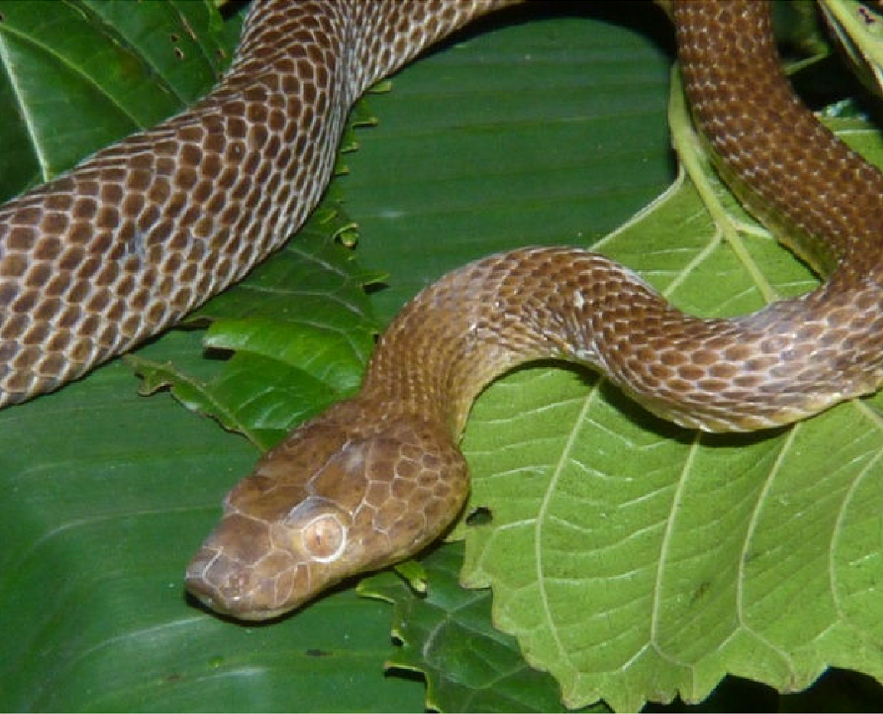
Lycodryas inornatus
Lycodryas inornatus found on a coastal strip in the southwest, from the area around the town of Morombe to Cape Sainte-Marie.
Lycodryas maculatus
Lycodryas maculatus or Lycodryas sanctijohannis generally found along a coastal strip in western Madagascar, from the vicinity of the town of Tuléar in the south to the Sahamalaza Marine National Park in the north.
Genus: Madagascarophis
The genus Madagascarophis is endemic to Madagascar. It includes 4 species:
 Madagascarophis colubrinus
Madagascarophis colubrinus
The Madagascarophis colubrinus which is found almost everywhere, at low altitude, near the coasts of Madagascar.
Madagascarophis fuchsi
The Madagascarophis fuchsi, which is found only on the French mountain, in northern Madagascar.
Madagascarophis méridionalis
The Madagascarophis méridionalis, which lives in a very large area in the southwest of Madagascar.
Madagascarophis ocellatus
The Madagascarophis ocellatus, which occurs in the coastal areas of southwestern Madagascar. Its range is bounded by the Mikea Forest in the north and Andohahela in the southeast.
Genus: Micropisthodon
The genus Micropisthodon is endemic to Madagascar and has only one species, Micropisthodon Ochraceus.
 Micropisthodon Ochraceus
Micropisthodon Ochraceus
Its name Micropisthodon (mikros / opisthen (back) / odous), comes from the fact that it has small molars. It is an animal that can measure up to 7 meters.
Its range corresponds to a coastal strip in eastern Madagascar, reaching Marojejy in the north and extending to Cape Masoala and Fort-Dauphin in the south.
Genus: Pararhadinaea
The genus Pararhadinaea is endemic to Madagascar and has only one species, Pararhadinaea melanogaster.
 Pararhadinaea melanogaster
Pararhadinaea melanogaster
The species also has two subspecies: Pararhadinaea melanogaster melanogaster, which is found in the north of Madagascar in an area that is bounded to the south by the Analamerana Reserve and then on the Nosy-be island is limited.
Pararhadinaea melanogaster melanogaster, which has been discovered and is in the Marojejy National Park is endemic.
Genus: Parastenophis
The genus Parastenophis is endemic to Madagascar and has only one species, Parastenophis betsileanus.
 Parastenophis betsileanus
Parastenophis betsileanus
Parastenophis betsileanus occurs throughout the eastern part of Madagascar, over a wide range from the northern tip of Madagascar and around the City Diego Suarez around as well as in the south to the City Fort-Dauphin.
This tree species of the rainforest is the only representative of its kind.
It is characterized by a large head and slit pupils. It is a species known to feed on chameleons.
It is an animal that is not afraid to approach villages, attack rodents and small animals.
Very nice snake that probably becomes rare here,
Genus: Phisalixella
The genus Phisalixella is endemic to Madagascar. It includes 4 species:
 Phisalixella arctifaasciata
Phisalixella arctifaasciata
Phisalixella arctifaasciata, found throughout the eastern zone of Madagascar at low and medium altitudes.
Phisalixella iarakensis
Phisalixella iarakensis, which occurs in northern Madagascar, although its actual range remains unclear.
Phisalixella tulearensis
Phisalixella tulearensis, which lives not only in Tulear, although its name seems to indicate it, but on a wide strip along the coast of Madagascar, from the vicinity of the city of Majunga to Fort-Dauphin.
Pseudoxyrhopushisalixella variabilis
Pseudoxyrhopushisalixella variabilis found in northern Madagascar, including the Amber Mountains and Ankarana.
Genus: Pseudoxyrhopus
The genus Pseudoxyrhopus is endemic to Madagascar. It includes 11 species:
 Pseudoxyrhopus ambrensis
Pseudoxyrhopus ambrensis
The Pseudoxyrhopus ambrensis, which is found in only two different places, the Amber Mountains and Tsaratanàna.
Pseudoxyrhopus analabe
The Pseudoxyrhopus analabe found in northern Madagascar, in a large area bounded on the north by Anjanaharibe-Sud and extending west of Maroantsetra.
Pseudoxyrhopus ankafinaensis
The Pseudoxyrhopus ankafinaensis, which occurs only in a small area of less than 100 km² slightly west of Ranomafana.
Pseudoxyrhopus heterurus
The Pseudoxyrhopus heterurus found on the northeastern part of the island, on a coastal strip that runs from the vicinity of the town of Sambava in the north to Tamatave, then descends toward the highlands, to the vicinity of Andasibe Mantadia.
Pseudoxyrhopus imeriane
The Pseudoxyrhopus imeriane or Imerina of the highlands, which occurs in an area from the south of Antananarivo to the vicinity of Ambositra.
Pseudoxyrhopus kely
The Pseudoxyrhopus kely (which means small in Malagasy), lives in southeastern Madagascar, near the town of Fort-Dauphin. However, its presence (not certain) is also reported in the Bemaraha Nature Reserve.
 Pseudoxyrhopus microps
Pseudoxyrhopus microps
The Pseudoxyrhopus microps, which occurs throughout the eastern and northern parts of Madagascar. It is also found on the island of Nosy-be.
Pseudoxyrhopus oblectator
The Pseudoxyrhopus oblectator, which lives in the eastern highlands. Its range is large and extends over the Anjozorobe, Marolambo and Ranomafana nature reserves.
Pseudoxyrhopus quinquelineatus
Pseudoxyrhopus quinquelineatus, which is found almost everywhere on the island, occurs in northern Madagascar, in a large area bounded mainly by the west coast in the north, on an area from Port-Bergé to Andohahela, but also in the extreme north, including the Amber Mountains and Ankarana Reserves, and also in the central east, including Andasibe and Anjozorobe.
Pseudoxyrhopus sokosoko
Pseudoxyrhopus sokosoko, a species classified as "susceptible" that occurs only in a small area in southeastern Madagascar near the town of Fort-Dauphin.
Pseudoxyrhopus tritaeniatus
The Pseudoxyrhopus tritaeniatus, which occurs throughout the eastern part of Madagascar, on an area from Marojejy to Fort-Dauphin, including the area around Masoala.
Genus: Thamnosophis
The genus Thamnosophis is endemic to Madagascar. It includes 6 species:
 Thamnosophis epistibes
Thamnosophis epistibes
Thamnosophis epistibes, which lives on the whole coastal area of eastern Madagascar, up to Marojejy in the north and Fort-Dauphin in the south.
Thamnosophis infrasignatus
Thamnosophis infrasignatus was found throughout the forest corridor in eastern Madagascar, south to Andohahela and north between the Tsaratanàna and Manongarivo reserves.
Thamnosophis lateralis
Thamnosophis lateralis, which is widely distributed throughout central and eastern Madagascar.
Thamnosophis martae
The Thamnosophis martae, found in the north of the island, in a small territory south of the city of Diego Suarez, including the Special Reserve of the Amber Mountains.
Thamnosophis mavotenda
The Thamnosophis mavotenda, a snake of the Tsingy, found only in the reserves of Bemaraha and Namoroka.
Thamnosophis stumpfii
Thamnosophis stumpfii, which lives in northeastern Madagascar, in Nosy-be and the adjacent region around Ambanja.
Genus: Mimophis
The genus Mimophis is endemic to Madagascar and has only one species, Mimophis mahfalensis, or the Mimophis of Mahafaly country, a Malagasy ethnic group.
 Mimophis mahfalensis
Mimophis mahfalensis
But in reality, the range of Mimophis mahfalensis is not limited to Mahafaly country, which is located in the southwest.
In fact, it is found almost everywhere on the island, especially throughout the western part and in the highlands.
The species also has two subspecies: Mimophis mahfalensis mahfalensis and Mimophis mahfalensis madagascariensis.

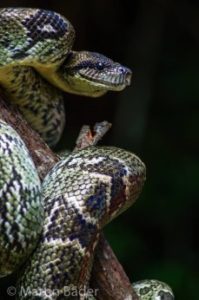
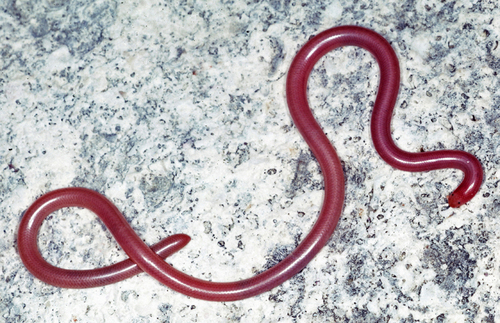 Madatyphlops madagascariensis
Madatyphlops madagascariensis Compsophis albiventris
Compsophis albiventris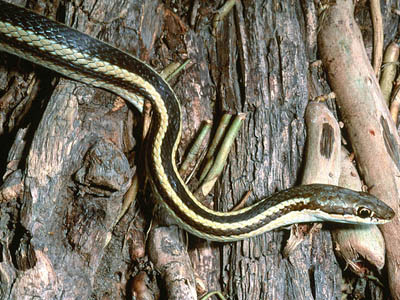 Dromicodryas quadrilineatus
Dromicodryas quadrilineatus 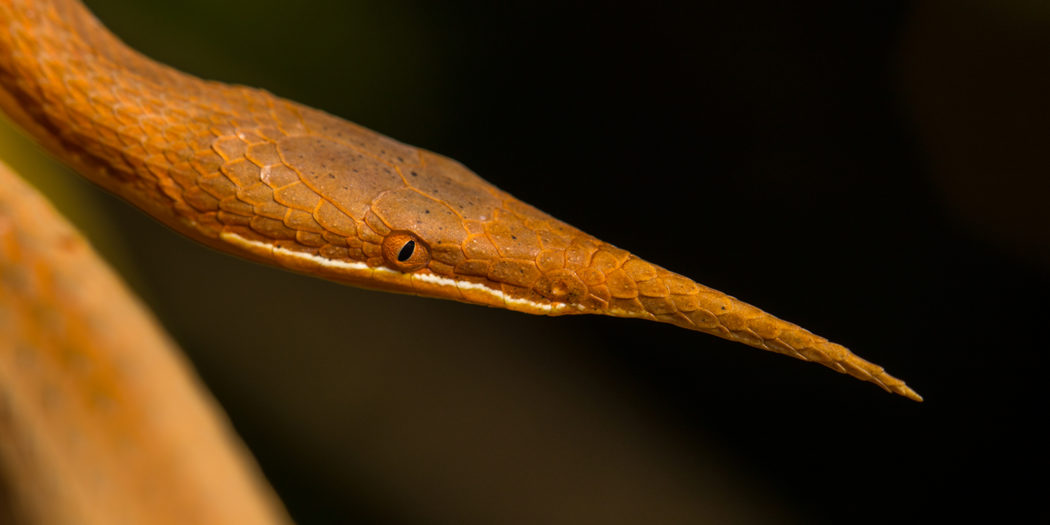 Langaha madagascariensis
Langaha madagascariensis Liophidium apperti
Liophidium apperti Liophidium pattoni
Liophidium pattoni Liophidium trilineatum
Liophidium trilineatum Liopholidophis dimorphus
Liopholidophis dimorphus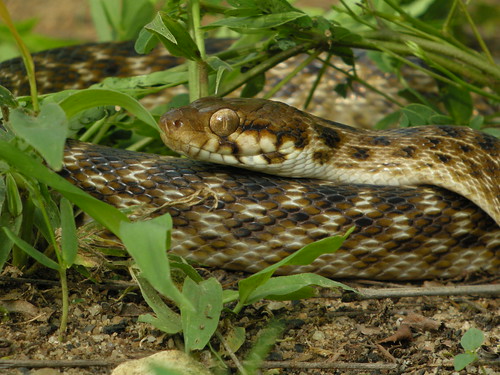 Madagascarophis colubrinus
Madagascarophis colubrinus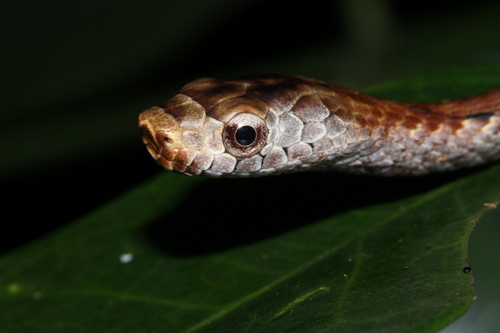 Micropisthodon Ochraceus
Micropisthodon Ochraceus Pararhadinaea melanogaster
Pararhadinaea melanogaster Phisalixella arctifaasciata
Phisalixella arctifaasciata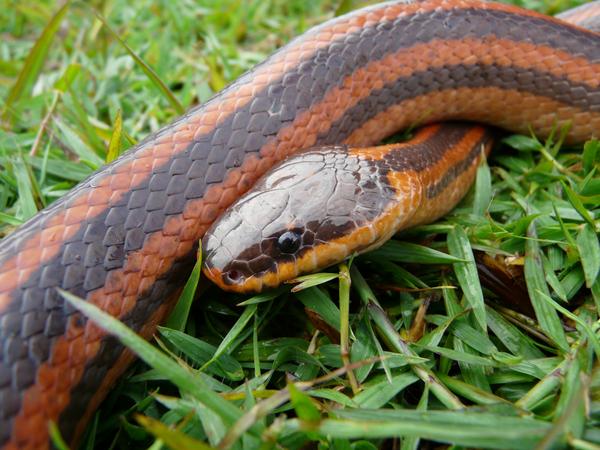 Pseudoxyrhopus ambrensis
Pseudoxyrhopus ambrensis Pseudoxyrhopus microps
Pseudoxyrhopus microps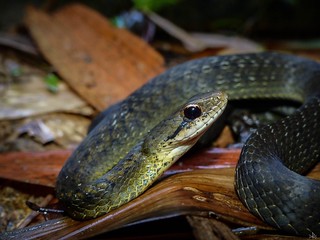 Thamnosophis epistibes
Thamnosophis epistibes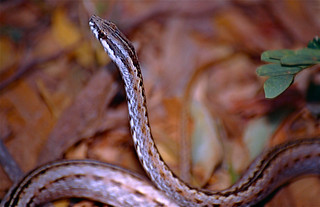 Mimophis mahfalensis
Mimophis mahfalensis

